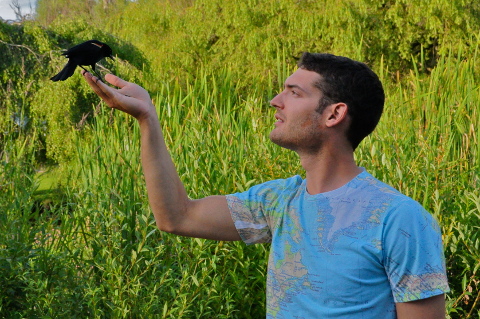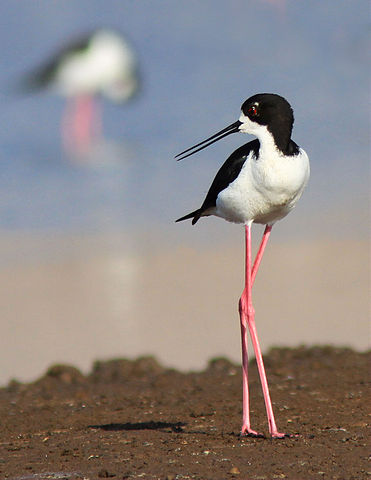On March 31 2021, PLOS Computational Biology introduced a new journal requirement: mandated code sharing. If the research process included the creation…
Q&A with Daniel Field–Weighing Dead Birds
Although we can directly weigh modern birds, we can’t do this with extinct birds–and we need to know body mass to understand their biology! The previous post on this blog reviewed a newly published PLoS ONE paper on how to accurately estimate the mass of a bird from measurements of its skeleton. The senior author on that paper, Daniel Field, was kind enough to answer a few questions about the research and tell us some anecdotes that didn’t make it into the formal publication.

What was the inspiration for your research?
As you mention in the introduction to your [previous] blog post, body mass correlates with many important biological parameters. Therefore, having an idea of how much a fossil organism weighed can provide important clues about its lifestyle–clues that may otherwise be difficult to infer. Although a considerable body of work presenting methods for estimating the body mass of fossil birds already existed, I was troubled by the fact that most studies investigating fossil body mass only quantify a single, mean mass estimate. This approach is problematic, since a considerable amount of uncertainty exists in our attempts to estimate fossil body mass; only presenting a single, mean estimate oversimplifies the situation, and runs the risk of making estimates seem speciously precise. With our study, we attempted to address this issue by providing simple methods for estimating well-justified 95% prediction intervals for fossil mass estimates.
Was this paper part of a larger project, or an isolated study?
This work constitutes a portion of my PhD dissertation, which will seek to apply well-justified body mass estimates to a variety of interesting problems in bird evolution.
You spent a lot of time in the Yale Peabody Museum collection gathering data for the study…is there any specimen from the project that sticks out in your mind as particularly interesting?
One thing that really emerges when you spend time looking at bird skeletons is the incredible disparity in their hindlimb proportions. Unlike in humans, where the femur and tibia constitute the vertical portion of the leg, the vertical portion of a bird’s leg is composed of the foot (the ‘tarsometatarsus’) and the tibia (‘tibiotarsus’ to be precise). Some of my favourite birds are waders and shorebirds (like herons, flamingoes and sandpipers), which exhibit some of the most extremely elongated hindlimbs in nature. I find the supremely elongated tarsometatarsus of stilts (aptly-named shorebirds of the genus Himantopus) to be some of the most graceful bones in any museum collection. Here’s a link to an image of a flying stilt in Spain, showing off its gangly legs.

What was the most challenging part of this project?
With a project of this scale, a challenging issue that emerges is simply one of data management; with approximately 12,000 spreadsheet cells of raw data, simple frame-shift errors can have huge consequences! This was something that we all needed to be mindful of when inputting data, performing analyses, and making corrections.
You used the open source statistical software R for data analysis…how was that experience for you and your co-authors? Did you have much background with the software before this project?
At the outset of the study, only one of our group members (Simon Darroch) had much experience working with R, so his analytical work was crucial. At the time, the prospect of analyzing this much data seemed really daunting to me. However, I had the chance to participate in a statistical workshop geared towards palaeontologists last summer, which gave me my first exposure to R and taught me many skills that will be useful moving forward. Most of the analyses that we present are actually really simple to implement in R, as long as you have a bit of a background.
Thank you, Daniel, for telling us the story behind the paper! If you want to learn more, you can check out his personal website, read my blog post about the body mass estimation paper, or read the paper itself at PLoS ONE.
Citation
Field DJ, Lynner C, Brown C, Darroch SAF (2013) Skeletal correlates for body mass estimation in modern and fossil flying birds. PLoS ONE 8(11): e82000.doi:10.1371/journal.pone.0082000
